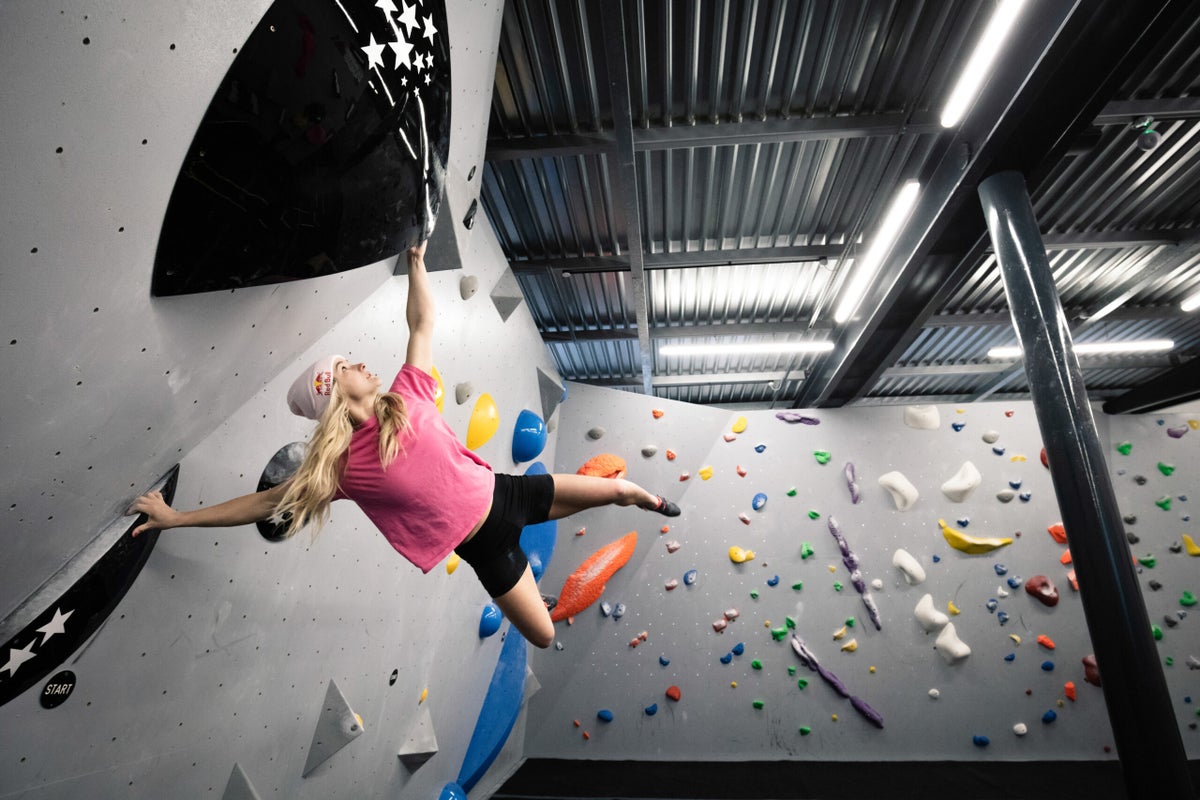If so, I have a one word solution: “hypergravity”.
Sure, improving your technique and mental game is always paramount, but sometimes a breakthrough in climbing demands raw strength. Unfortunately, there is a physiological limit to how strong you can get simply by training with a fixed resistance. When climbing, gravity provides a training resistance that is limited to your weight.
Developing a higher level of strength and power to climb requires you to increase the apparent pull of gravity. You can create this with hypergravity training by adding weight to your body while performing a specific climbing exercise. The long-term benefits of hypergravity training are analogous to the lightness you feel after removing a heavy backpack. Imagine creating this effect on the rock. By conditioning your body to exercise and climb at a resistance level greater than your body weight, you can make this lightness a reality.
The following are three hypergravity exercises intended to give you superior strength. It’s best to simulate hypergravity with a weight belt that sits close to your center of mass (a weight pack is too cumbersome), which will be different for men and women. Buy one or two 10-pound weight belts at a sporting goods store, or use a large fanny pack and add two-pound diver weights as needed.
A word of warning: hypergravity training is not appropriate for novice climbers or anyone in poor general shape (can you do 15 pull-ups and climb at least 5.10?) or who has a finger, arm, or shoulder injury .
weight pull-ups
This may be the most effective strength training exercise for intermediate and advanced climbers. Performing three sets of pull-ups with an additional 5 to 30 pounds will produce big gains in strength and pulling power. For initial workouts, I suggest adding five to seven percent of your body weight. Experiment to determine your ideal training weight. I recommend an amount that allows you to do three sets of pull-ups (10-20 reps each). Take a three-minute break between sets and increase the weight by five pounds if you can do more than 20 pull-ups.
If available, you can use a gym-style pulldown machine as an alternative to weighted pull-ups. This will also require some experimentation to determine your ideal training weight. Start with a weight equal to your bodyweight (the weight marked on the plates may not equal doing bodyweight pull-ups) and increase as needed to produce muscle failure for eight to 12 reps. Do three sets with a three-minute break between sets.

More than 10 boulders
Tired of wall workouts at home or sending the same rock problems to the gym? Strap on a 10-pound weight belt and you’ll have a powerful strength and power workout. After a long warm-up, climb a loop of five to 10 moderate bouldering issues (a few degrees V below your limit). Focus on scaling each problem with sharp technique and smooth execution. Rest for five minutes between problems and ditch the weight belt at the first sign that your technique is suffering. Favor problems with medium to long reaches, and avoid painfully small holds and runaway dynamometers.
HIT system
Hypergravity Isolation Training (HIT) is the gold standard for developing grip strength. Not to be confused with “HIT” workouts performed by bodybuilders, this highly specific grip training method involves moving up and down a weighted, 45-degree wall using identical finger grips, spaced approximately 18 inches apart, for a full set. Targeted stimulation is the linchpin of this isolation strategy, and is best achieved through the use of specialized system holds or by creating a “ladder” of identical holds.
The goal is to execute one or two sets for each main grip position: pinch, two-finger pocket, full crimp, half crimp, and open hand. Each set should be performed with enough additional weight to produce grip failure in 10 to 20 hand movements. Go up with your feet spread wide (preferring positive but not big holds that don’t result in unexpected foot strike) and allow your body to move and twist naturally during up and down turns. Take a three minute break and then start your next HIT set. It’s important to keep your training progressive, so add weight for future workouts if you can climb more than 20 hand movements before failing. Keep a training notebook and record your progress. These logs will be helpful in guiding future training and in just a few weeks will reveal definite gains in finger strength!
Eric J. Hörst is the author of Training for Climbing and Learning to Climb. Visit TrainingForClimbing.com to learn more about Eric’s training strategies.
